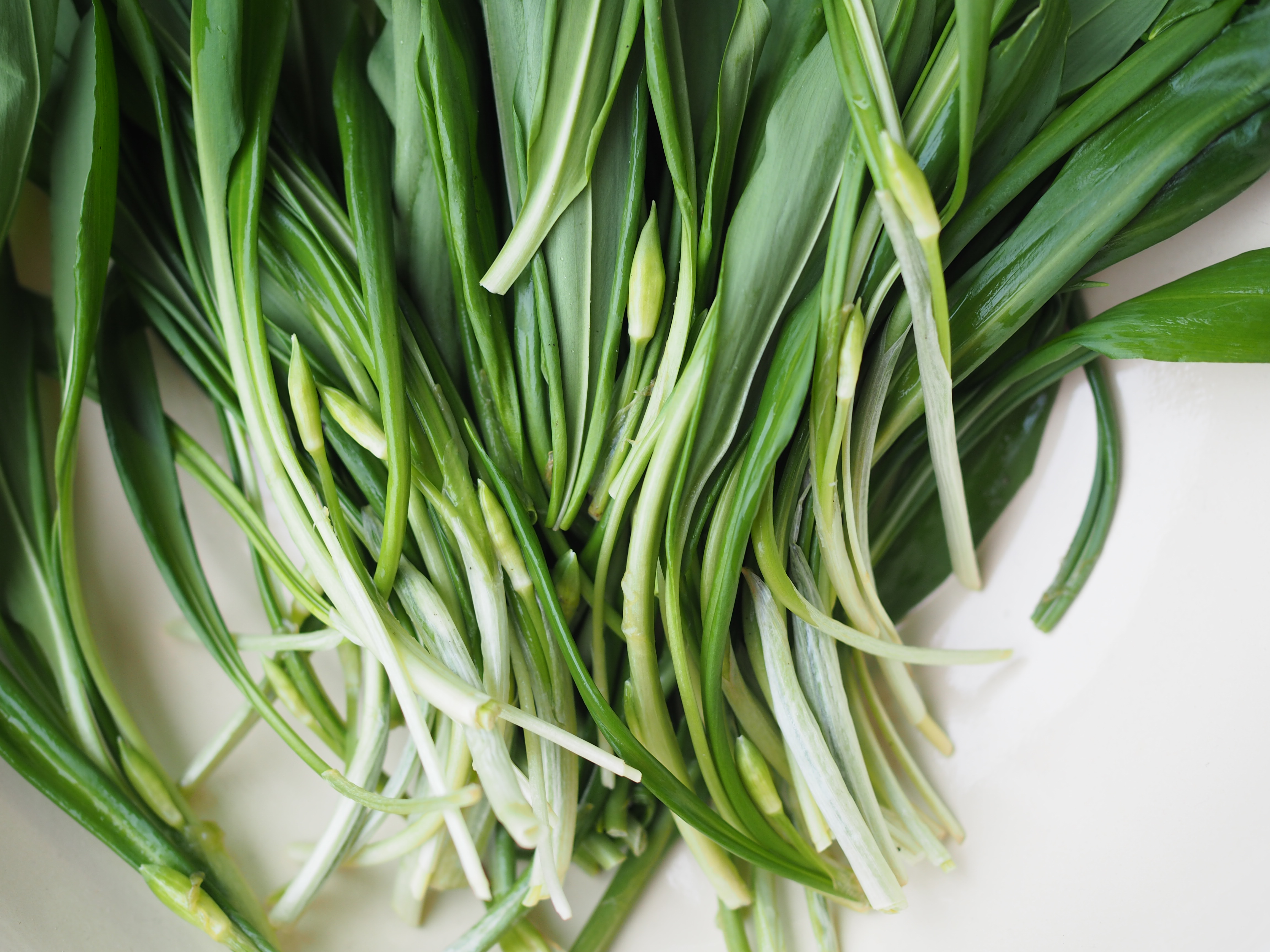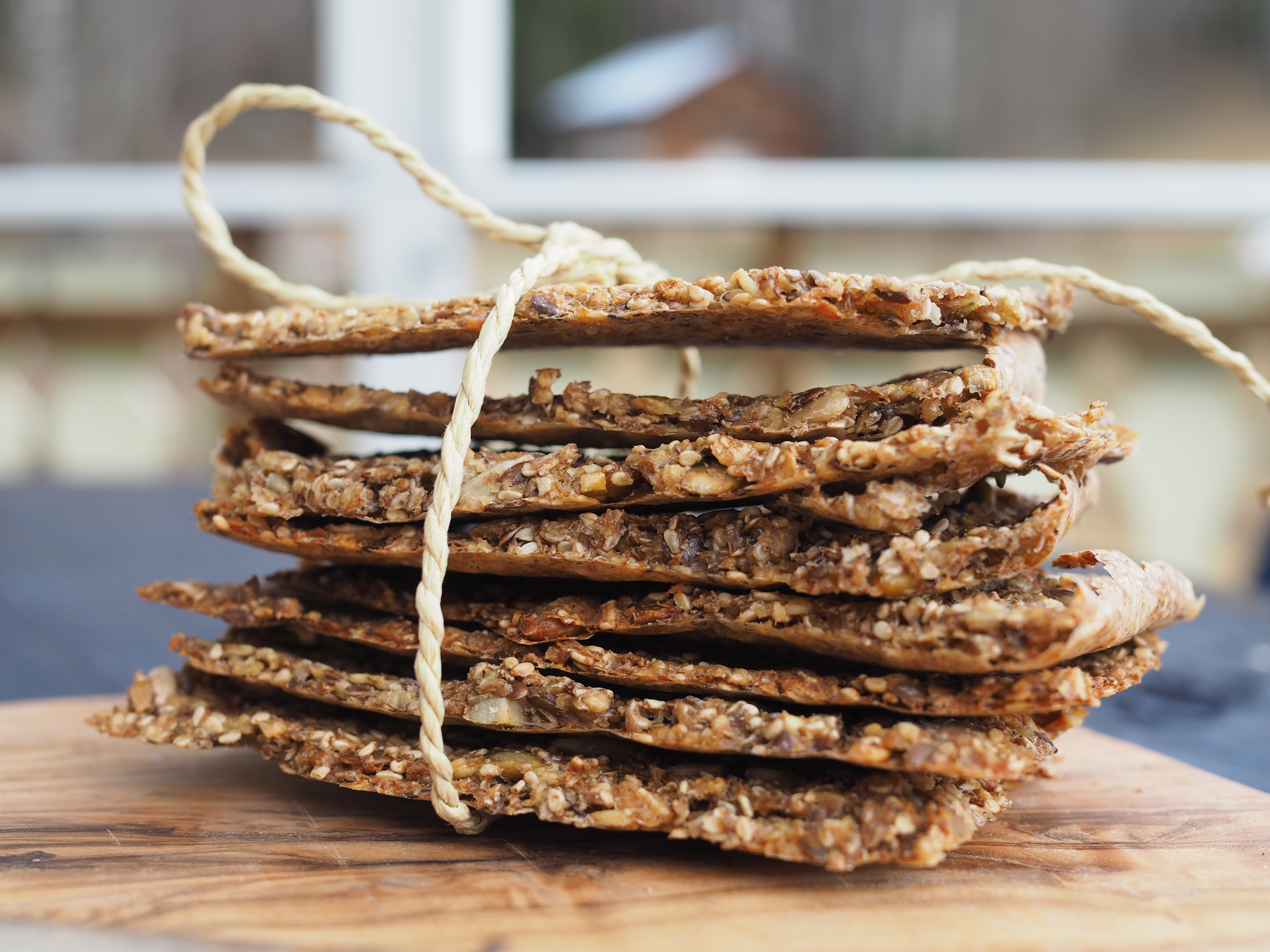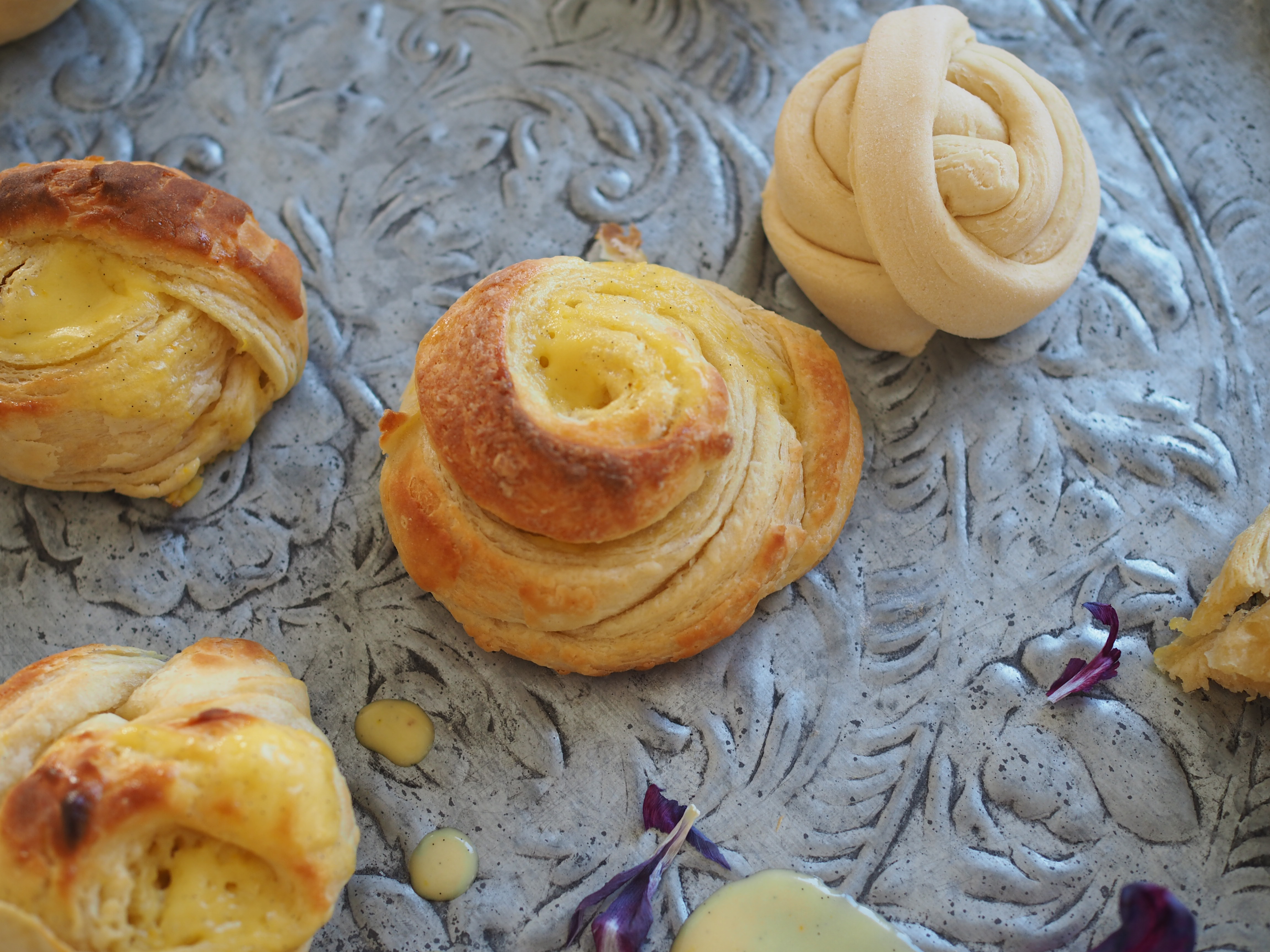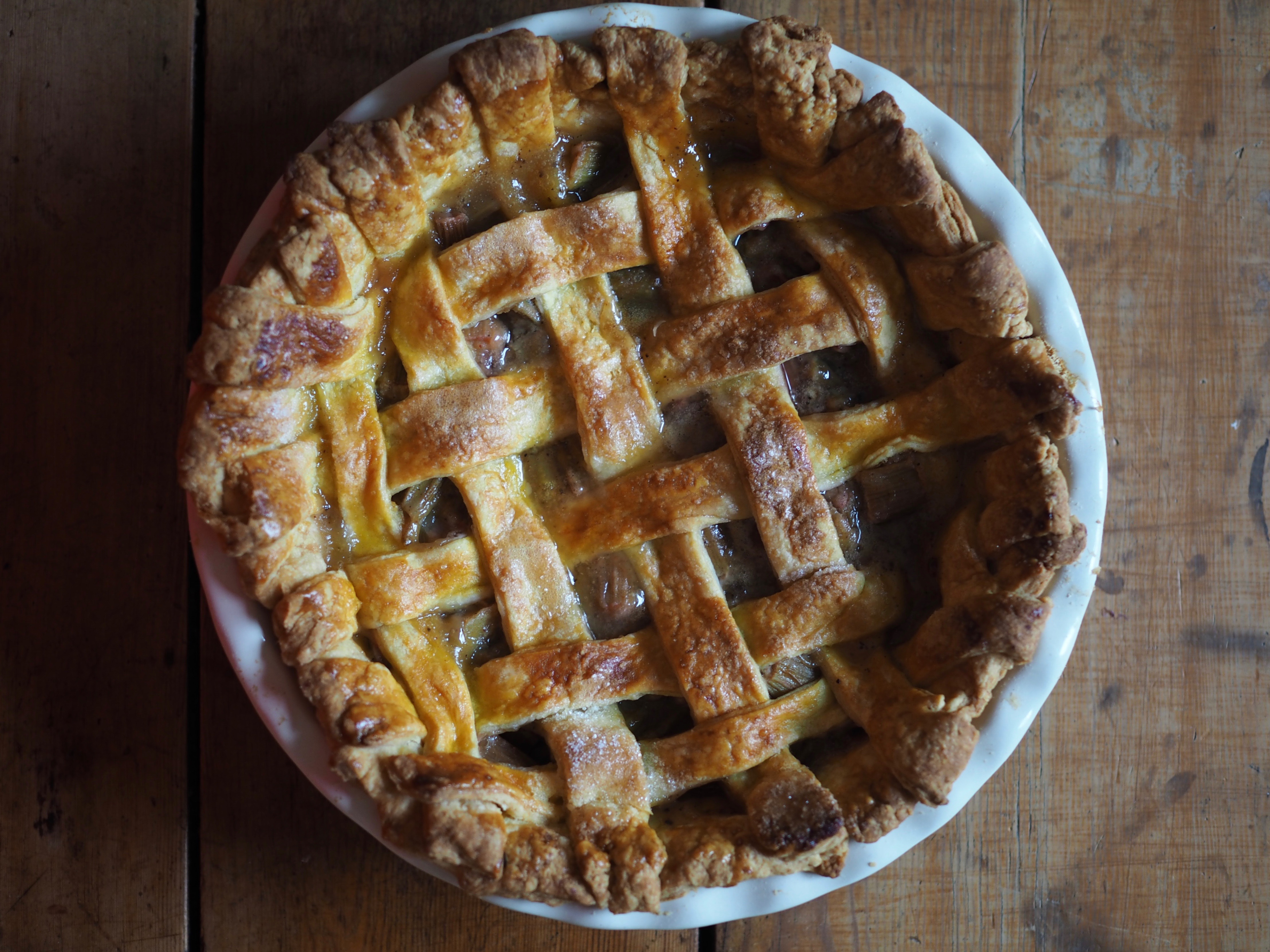 Nearby an old rock wall, sturdy but aged and covered with greenery, lies a handful of rhubarb plants. I like to imagine these were purposefully planted so many years ago on our farm when the original house stood on the very hill which those old stones continue to hold up. A house garden, perhaps, providing the old house with a wonderful supply of this springtime favorite. I discovered them intermixed with an overgrowth of nettles and ferns last year when we first moved to the farm. And while preparing the area this spring, I discovered the rhubarb plants were many and even found a couple of berry bushes nestled in front of the stones as well.
Nearby an old rock wall, sturdy but aged and covered with greenery, lies a handful of rhubarb plants. I like to imagine these were purposefully planted so many years ago on our farm when the original house stood on the very hill which those old stones continue to hold up. A house garden, perhaps, providing the old house with a wonderful supply of this springtime favorite. I discovered them intermixed with an overgrowth of nettles and ferns last year when we first moved to the farm. And while preparing the area this spring, I discovered the rhubarb plants were many and even found a couple of berry bushes nestled in front of the stones as well.
Tag: norskmat
-

Wild Garlic – Soup and Bread with Potatoes (Ramsløksuppe og Ramsløkbrød)
Wild garlic or ramps, known as ramsløk in Norwegian, can be found along the coasts and in the forests of Norway mainly during May and June. The season is short, only a few weeks, and as quickly as they grow up, they wither before the start of summer. They are a culinary treasure, used by chefs and home cooks who wish to serve up the perfect taste of springtime. They are also incredibly nutritious, and have been used for centuries for their medicinal properties.
This delightful plant grows wild, and has a subtle garlic flavor. It makes a nice addition to soups, salads, tarts and sauces as its taste is incredibly versatile. It’s one of those greens that needs only a little imagination to go a long way. If you can’t get your hands on any wild garlic, you can substitute it with garlic chives.
-

Knekkebrød (Norwegian Crisp Bread)
 A Norwegian breakfast and lunch is never complete without a slice of bread or a type of knekkebrød. These ‘crisp breads’ or ‘breaking breads’ which are flat and dry, resembling a cracker, probably originated in Scandinavia close to 500 years ago. Some sources say that crisp bread was a staple of the Vikings as they could store them for long periods of time. These crisp breads would have been baked on hot stones, while today’s knekkebrød is baked in the oven. Baking them in the oven is what makes these crisp breads so different from the Norwegian flatbrød, which is baked on a flat griddle, much like lefse.
A Norwegian breakfast and lunch is never complete without a slice of bread or a type of knekkebrød. These ‘crisp breads’ or ‘breaking breads’ which are flat and dry, resembling a cracker, probably originated in Scandinavia close to 500 years ago. Some sources say that crisp bread was a staple of the Vikings as they could store them for long periods of time. These crisp breads would have been baked on hot stones, while today’s knekkebrød is baked in the oven. Baking them in the oven is what makes these crisp breads so different from the Norwegian flatbrød, which is baked on a flat griddle, much like lefse.Once considered a poor man’s diet, knekkebrød has become widely popular boasting a healthy lifestyle with numerous variants from slightly sweet to nutty to herby & salty. They are easy to make, forgiving, and require only a few ingredients, which can be interchanged depending on what you have available in your cupboards. All one needs is a little imagination and water.

-

Norwegian Spring Potato Salad (Potetsalat)
 The roosters and hens have given a whole new meaning to the term ‘free range’ these days. Making their rounds, they circle up into the woods and around the kitchen garden just before sunbathing and slumbering below my kitchen window. They continue on following a makeshift pathway down a small slope to the main lawn and heading back to their coop for another siesta. They make this journey a couple of times a day and the roosters crow every once in awhile as if to give me some sort of sense that their journey under the sun is going well. Very well.
The roosters and hens have given a whole new meaning to the term ‘free range’ these days. Making their rounds, they circle up into the woods and around the kitchen garden just before sunbathing and slumbering below my kitchen window. They continue on following a makeshift pathway down a small slope to the main lawn and heading back to their coop for another siesta. They make this journey a couple of times a day and the roosters crow every once in awhile as if to give me some sort of sense that their journey under the sun is going well. Very well.
-

Eggs til Påske

 As the sun rises, I find myself in the room I grew up in. The interior may have changed over the years I have been gone, but the memories have been imprinted across the walls, something that new paint cannot erase.
As the sun rises, I find myself in the room I grew up in. The interior may have changed over the years I have been gone, but the memories have been imprinted across the walls, something that new paint cannot erase.Yearning for the new day, as every morning person does, I walk down to my favorite room in the house. Mom’s already in the kitchen. Stove warming, coffee brewing. Eggs being cracked along a well-worn bowl. Our family traditions are always evolving. We keep to a few habitual rituals, but otherwise, our tradition is to be untraditional. And as I sit back, I reflect on the traditions which families and cultures set. Questions about where they come from and what does our table say about the way we celebrate and embrace them dance around in my head. Food is the heart and soul of any celebration and taking the time to the understand what’s on our plate and why can be just as important as the celebration itself.
The Norwegian Easter, or Påske (from the Hebrew word pasach or passover), is a mixture of traditions stretching far back throughout the ages. The traditions stemmed out of evolving Lutheran practices, pre-Christian or heathen times, Judaism, and some from the era prior to the Reformation when Norwegians were Roman Catholics. The Easter egg, coming from an old heathen tradition symbolizing fertility, did not take hold in Norway until the 1900s, when keeping hens made it ways into the country’s animal husbandry. During fasting times, eggs were banned, so on Easter Sunday, people were once again allowed to eat boiled eggs for breakfast and this became known as the Easter egg. For Norwegians, the egg is a more natural symbol of rebirth and Easter than the bunny. For this was the time of year when hens began to lay eggs. (Science Nordic) (more…)
-

Wienerbrød with Orange & Vanilla Custard
 The smell of melting butter amidst flaky dough fills the room. A slight hint of orange and vanilla. As I wait for the minutes to pass, I cozy up to my chair and read more about the famous pastry known in Norway as wienerbrød, or translated to viennese and commonly referred to as danish in English. The aroma is well-known across bakeries in Norway and the rest of Scandinavia. It’s a pastry that was indeed created from bakers in Denmark, but not solely by their own efforts. It was a result of inspiration and the borrowing of techniques, like most recipes today. By standing on the shoulders of others, they were able to create a new, inspired pastry.
The smell of melting butter amidst flaky dough fills the room. A slight hint of orange and vanilla. As I wait for the minutes to pass, I cozy up to my chair and read more about the famous pastry known in Norway as wienerbrød, or translated to viennese and commonly referred to as danish in English. The aroma is well-known across bakeries in Norway and the rest of Scandinavia. It’s a pastry that was indeed created from bakers in Denmark, but not solely by their own efforts. It was a result of inspiration and the borrowing of techniques, like most recipes today. By standing on the shoulders of others, they were able to create a new, inspired pastry.It is said that during the 1850s, a strike broke out amongst bakers in Copenhagen. This forced bakery owners to seek help from bakers in Vienna. The help was given, as it was usual for a baker master’s son to take up an apprenticeship in Vienna, the baking capital, and therefore they had good relations. The bakers from Vienna had a long tradition of lamination, where dough is layered with fat and rolled out several times. The Danish bakers were inspired and they began to develop the techniques, adjust to own their tastes and increase the amount of rich butter. The fillings and shapes were only left to the imagination and the creation of the Danish pastry or ‘Viennese Bread’ was born.


I came across an article about the historic town of Nusfjord, situated on Flakstadøya in Lofoten. The bakery, which no longer is in use, was built prior to 1877. It produced breads and pastries to both fishermen and locals. When fishermen would come from the fisheries to supply fish, they often had to take upon debt for shelter, food and tools as they could not pay in cash. The second squire of Nusfjord, known as ‘Old Bernhard’ would hang out a little bag filled with wienerbrød to every fishing crew as a small reward for their work, despite the debts. (Source)I like to think that, sometimes, it’s just the simple, kind gestures, like hanging bags of wienerbrød for the taking, are what brings us closer as a community. Filling the belly. Satisfying a need. Doing the unexpected. Showing kindness. Those are the measures which create good relations. And so, perhaps when we bake, we should consider to double the amount. A great excuse for taking a moment to sit down, converse and share something sweet and special. (more…)







